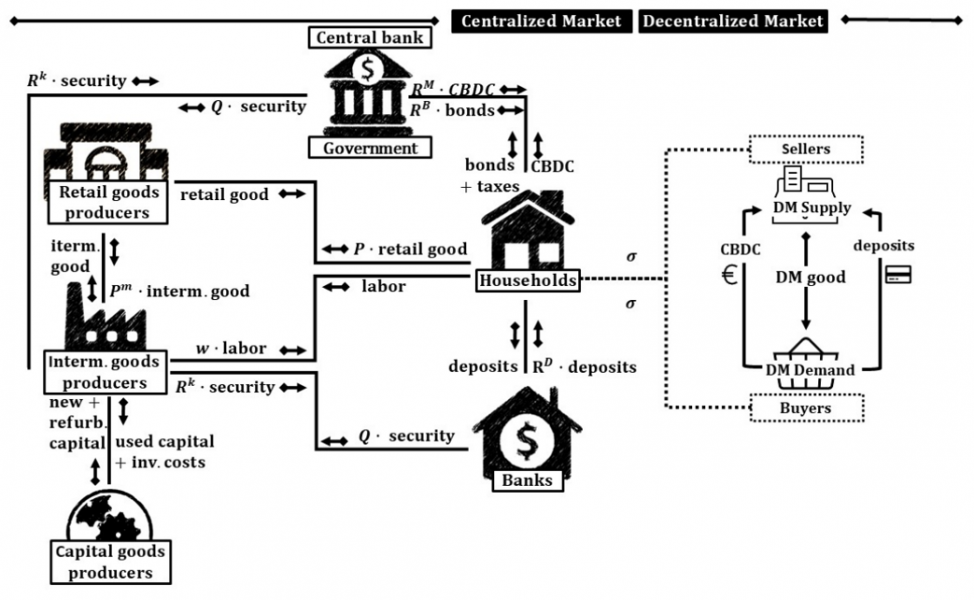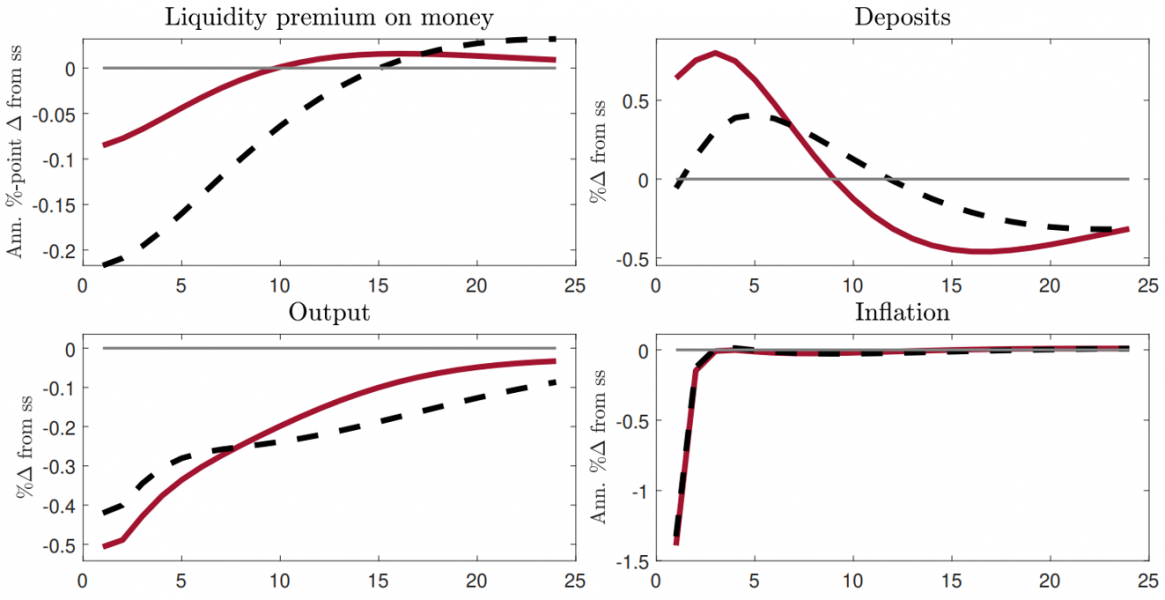References
Assenmacher, K., L. Bitter, and A. Ristiniemi (2023). CBDC and business cycle dynamics in a New Monetarist New Keynesian model. ECB Working Paper No 2811.
George, A., T. Xie, and J. D. A. Alba (2020). Central bank digital currency with adjustable interest rate in small open economies. Policy research paper series, Asia Competitiveness Institute.
Gertler, M. and P. Karadi (2011). A model of unconventional monetary policy. Journal of Monetary Economics 58(1), 17–34.
Group of Central Banks (2020). Central bank digital currencies: foundational principles and core features. Report 1, Series of collaborations from a group of central banks.
Lagos, R. and R. Wright (2005). A unified framework for monetary theory and policy analysis. Journal of Political Economy 113(3), 463–484.





